Tiwanaku also spelt Tiahuanaco or Tiahuanacu was the last of my day excursions from La Paz before heading to Sucre later that evening. I’ve wracked my brain to remember how much the tour of Tiwanaku cost but for the life of me I cannot recall! GRRRR. I do remember me arranging it through the little travel agent attached to Hotel Sagarnaga. It was a group tour and I was picked up from the hotel, I had enough time to have breakfast at Cafe del Mundo. Having spent the better part of the last two days in bed I needed to get out! I blame my lack of memory of the cost and writing no notes about the day on my lack of sleep and declining health – that’s not me being melodramatic.
Getting to Tiwanaku
Tiwanaku is around 74km West of La Paz, taking anything from 1.5-2.5 hours to get there. My tour consisted of about 10 people with a tour guide. Again, with no notes on the day I cannot remember his name. I do remember him being friendly, his English was good and he spoke softly. The tour included transport there and back, guided tour and lunch before heading back to La Paz. It took the best part of a day but could be done in half a day easily.
The drive there was pleasant. I tried to catch up on sleep so can’t say much about the scenery. At first sight upon arriving at Tiwanaku I was underwhelmed. Thinking all the interesting pictures I had seen about the place was all there was to see. Like watching an awesome movie trailer, but all the good parts are in the trailer and the rest of movie is boring. Located in what feels like the middle of nowhere in a large flat valley. All I could see was the onsite museum, one large mounds, a few walls and some scattered cut rocks. There is more than meets the eye.

Museum
Right by the sandy parking lot is an out of place modern minimalist face-brick building. The museum is totally different to its surroundings and worlds apart from the neighbourhood! Tiwanaku Museum is small yet informative, no photography is allowed. Inside are some of the best-found artifacts ranging from monolith carved stone, burial remains, pottery, ceramics and other carved stone (many stones carved into faces). Our whole tour lasted no more than 30 minutes so that should give you an indication of Tiwanaku Museum’s size. Word of note, the air-conditioning must have been set to make ice cubes! By the time we left most of us were freezing, some people even put their beanies on! That may not be the norm, but I remember it clearly! Anyway, I’d recommend visiting before making your way to the archaeological site – it is worth it.
The history of Tiwanaku and its inhabitants
There is disagreement on when the site was built and its dates of habitation. Like so many ancient sites it is probable and likely that it was occupied for some time before major structures where built. Exactly how long before is debatable. In more recent times there is some consensus that Tiwanaku was first inhabited between 50-170AD. The area peaked around 800AD with between 10-20 000 thousand people. I have wondered many times how archaeologists derive these figures. 10-20 000 sounds like a lot however it is not like everyone would have done the building. People still needed to farm and had day-to-day activities to do. Not everyone would have been a master stonemason either, many carved to exceptional standards! Just to clarify, no, I don’t think aliens built or help build Tiwanaku, nor do I think it was built 11-17 000 years ago (some people do).
Exactly why the place is called Tiwanaku isn’t known, nor if that is the original name. It may have come from the Aymara language from the word “taypiqala” meaning “stone in the centre”; this refers to Tiwanaku being the centre of the world. An alternative hypothesis is the Tiwanaku spoke a very isolated language called Puquina; not spoken by many people making it uniquely regional centric.
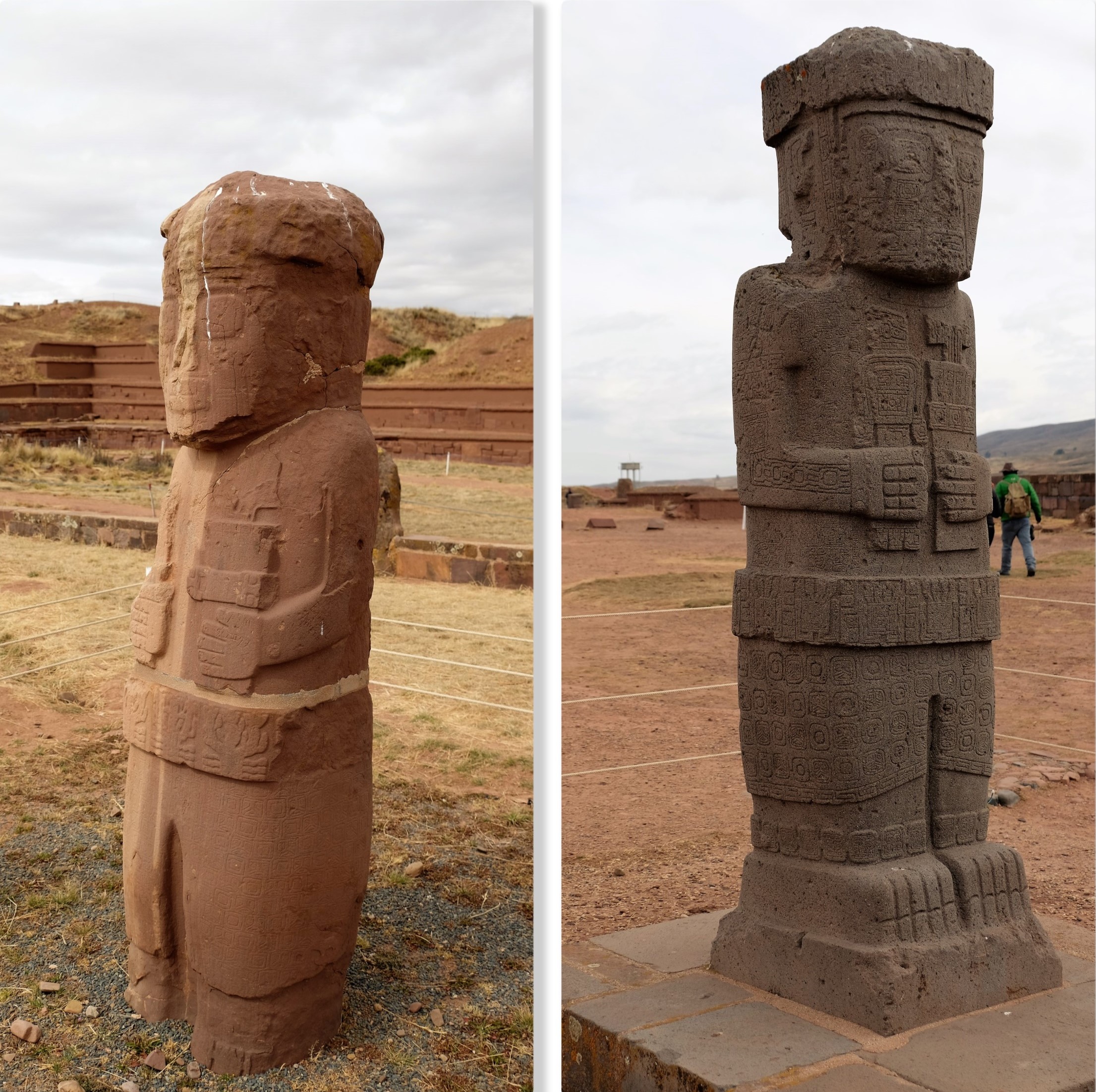
It’s inhabitants
There’s not much to say. The people of Tiwanaku didn’t have a written language that we know of. People have hypothesised through centuries of word of mouth, archaeological discoveries and similarities to other cultures of the region…who just so happen to not have had a written language either! It is frustrating that cultures like the Tiwanaku and Inca who left behind marvellous structures left nothing written behind. Maybe like the Inca who use quipa as a method of record keeping they also use another method to transcript history, stories and messages. Alas we have yet to find or decipher what is left behind to uncover these mysteries. Whereas the Inca have almost nothing carved into their structures, the Tiwanaku do. What is left of Tiwanaku does not resemble anything like the Incas; it is more similar to the Mayan and Aztec (my opinion), but those cultures are thousands of kilometres away.
Their social structure is thought to be similar to that of the Incas; led by a ruler and the elite. These upper echelons would provide for the “commoners”; ensuring harmony, rule of law and resource distribution. As the population grew people became more specialised in e.g. pottery, textiles, stonemasons/builders, farming etc. These skill differences would reinforce the hierarchical structure, some skills having more status than others. Elites would live closer to the epicentre of Tiwanaku (within its walls) which was surrounded by a moat. The moat’s specific function isn’t known, it could be a metaphorical representation creating a sacred island. Or, it could have been used both for aesthetics and functional purposed i.e. used as a method for transportation of materials/produce (like the Egyptians). Inside these sacred walls was carved stones depicting human origin (facing inwards) which only those “special” enough living inside the four walls could see.

History of the site
In search of the Southern Inca capital Qullasuyu, Spanish conquistador Pedro Cieza de León, came across Tiwanaku in 1549 as the first Westerner. Tiwanaku’s proposed construction methods have been deduced by leasons learnt from excavations and other regional hypothesise, though none of these can be confirmed. Stones carved with into polygon and polyhedron shapes many with perpendicular lines. Though many such as the carved heads and the upper part of the Gateway of the Sun have curvature lines.
As for other construction methods there are three hypothesise (taken primarily from Wikipedia):
- One proposition is that they used a “luk’a”, a measurement which is about 6 centimetres
- Some say they may have even used the Pythagorean Ratio; for right triangles at a ratio of five to four to three used in the gateways to measure all parts.
- Thirdly, they had a system set for individual elements dependent on context and composition e.g. as in the construction of similar gateways ranging from diminutive to monumental size, proving that scaling factors did not affect proportion. With each added element, the individual pieces were shifted to fit together
The full extent of the Tiwanaku Empire isn’t clear, they certainly weren’t just location within the region of the temple complex. Similar pottery and stone carvings have been found near the Peruvian coast, Yungas region and into Chile. Tiwanaku’s demise and near disappearance of its people is a mystery. A probable cause for the abandonment of the site is a bad or prolonged drought. Where the inhabitants and greater population moved to is a mystery yet to be solved.
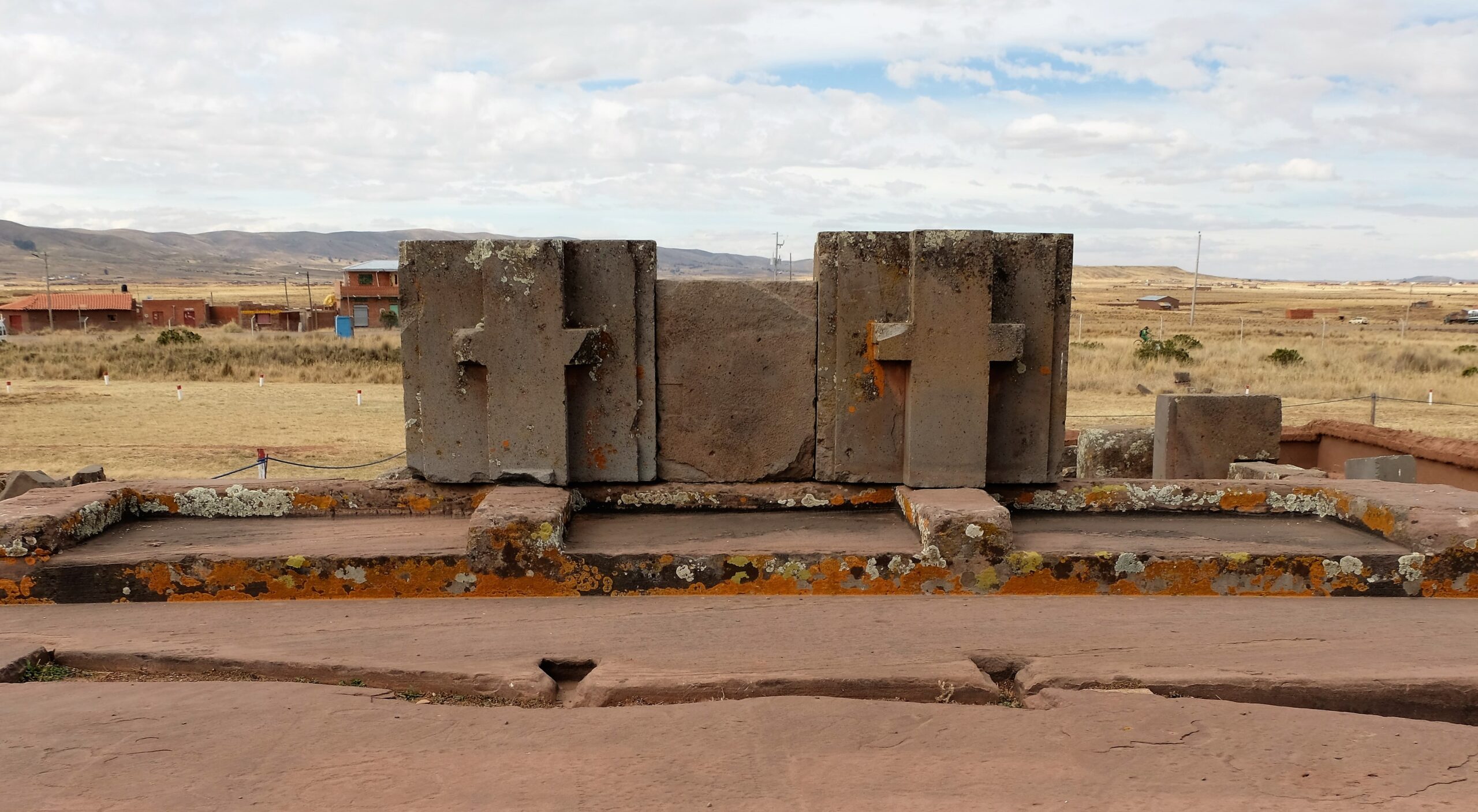
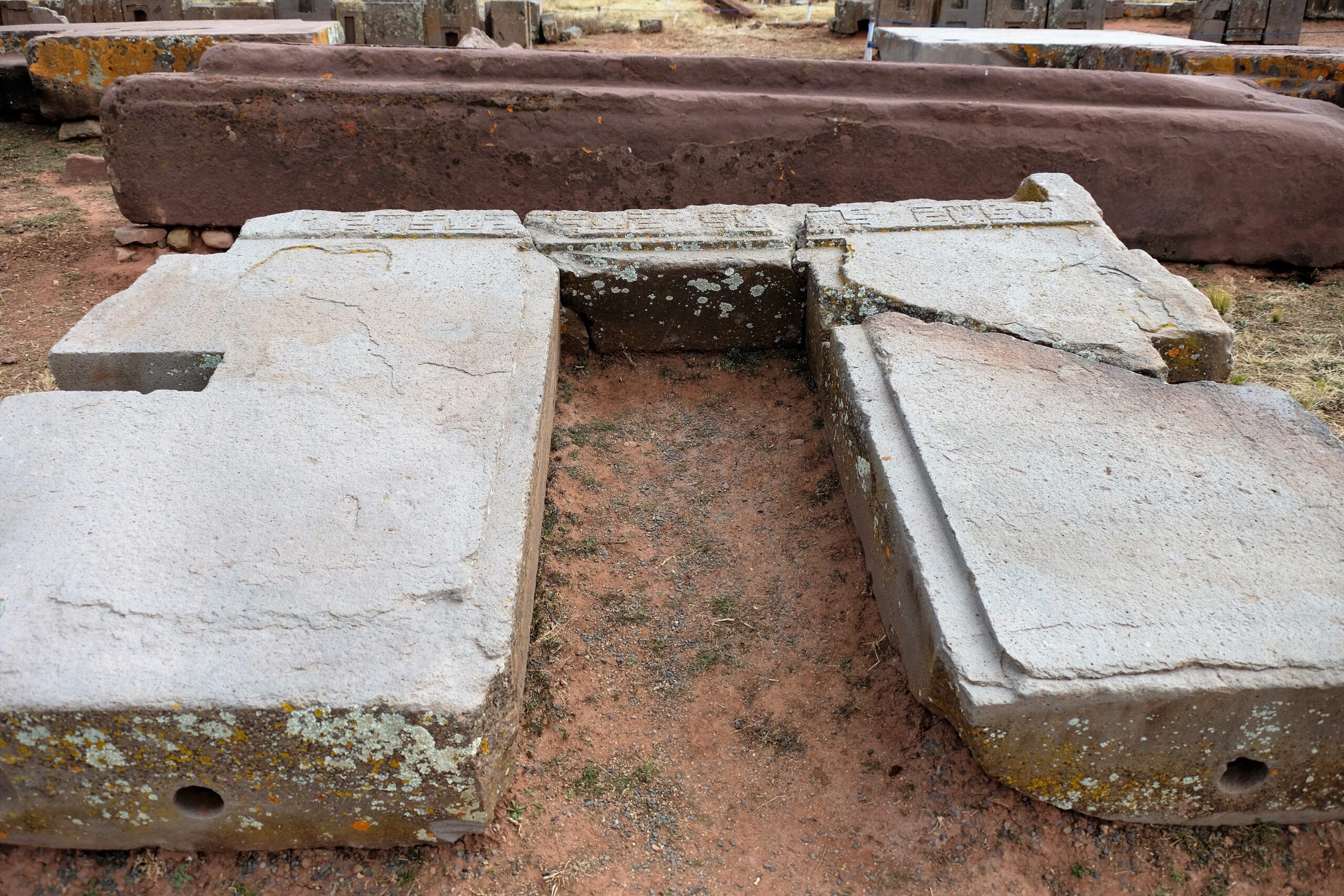
The site structures
As a whole the site is still under restoration. Work done years back wasn’t done with much authenticity in mind. Restoration work done from 1978 onwards has been approach with more modern, academically sound archaeological techniques. The area is large, ranging from 3.8–6.5 square kilometres; meaning what we see today is a tiny fraction of this ancient capital city. The site has 5 main attractions with many smaller one’s dotted around the area. I’m only going to cover the main sites…because I don’t know much about the smaller ones ? Where work was being carried out, both excavation and restoration access was closed to the public.
Akapana
The Akapana dominates the area, rightfully so as this is the main structure at Tiwanaku. It reminded me somewhat of a combination of Huaca Pucllana and Huaca Huallamarca in Lima, except more advanced. Like the structures in Lima, Tiwanaku is a step pyramidal in shape but more in the shape of a cross. Standing 16.5m high, it is 257m wide and 197m broad at its maximum. At the top centre are the remains of what could and was likely a sunken court; totally wrecked by looters who have damaged and looted throughout Tiwanaku. I’m guessing the staircase on the West-side was the main staircase, the Eastern-side is damaged; looters used it to dump material from their “excavation”.
On its Northeast & Southeast side may have been a residential area, for upper society of course. Akapana is 100% manmade, using earth and rocks of various sizes, the biggest weighing as much as 65tons(andesite), a great feat of engineering and willpower. Some of the earth fill used for Akapana probably came from the excavated moat, but Akapana would have needed considerably more fill than just that! Akapana’s function, hmmmmm. It may have been used by the head puma-priest/shaman; a relationship/connection/transformation through shape shifting &/or connection to the spirit world. In the upper terraces there are puma and human head studs in the walls, like those in the sunken courtyards at the site. Excavations have shown an earlier structure, much less significant in construction on the Eastern side,

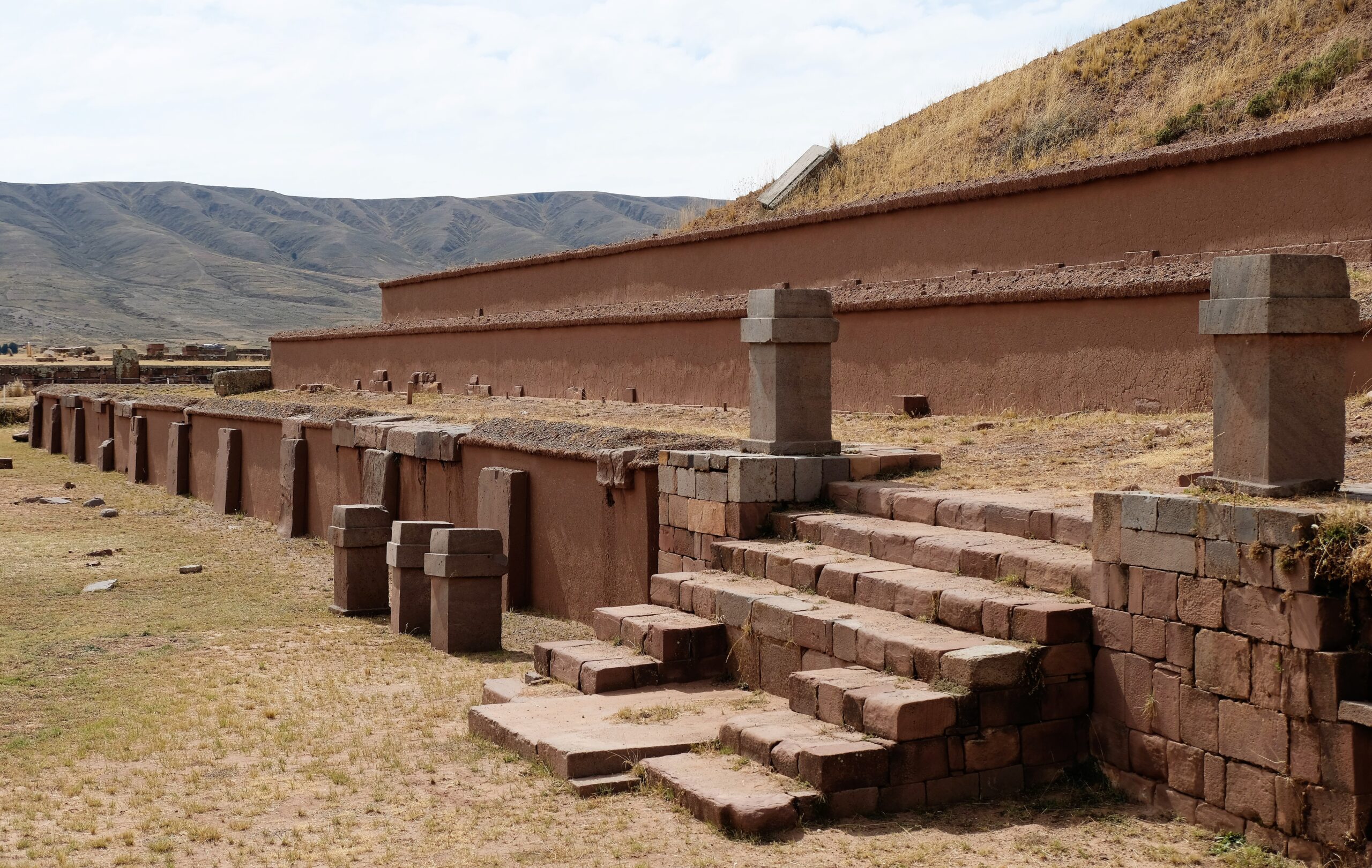
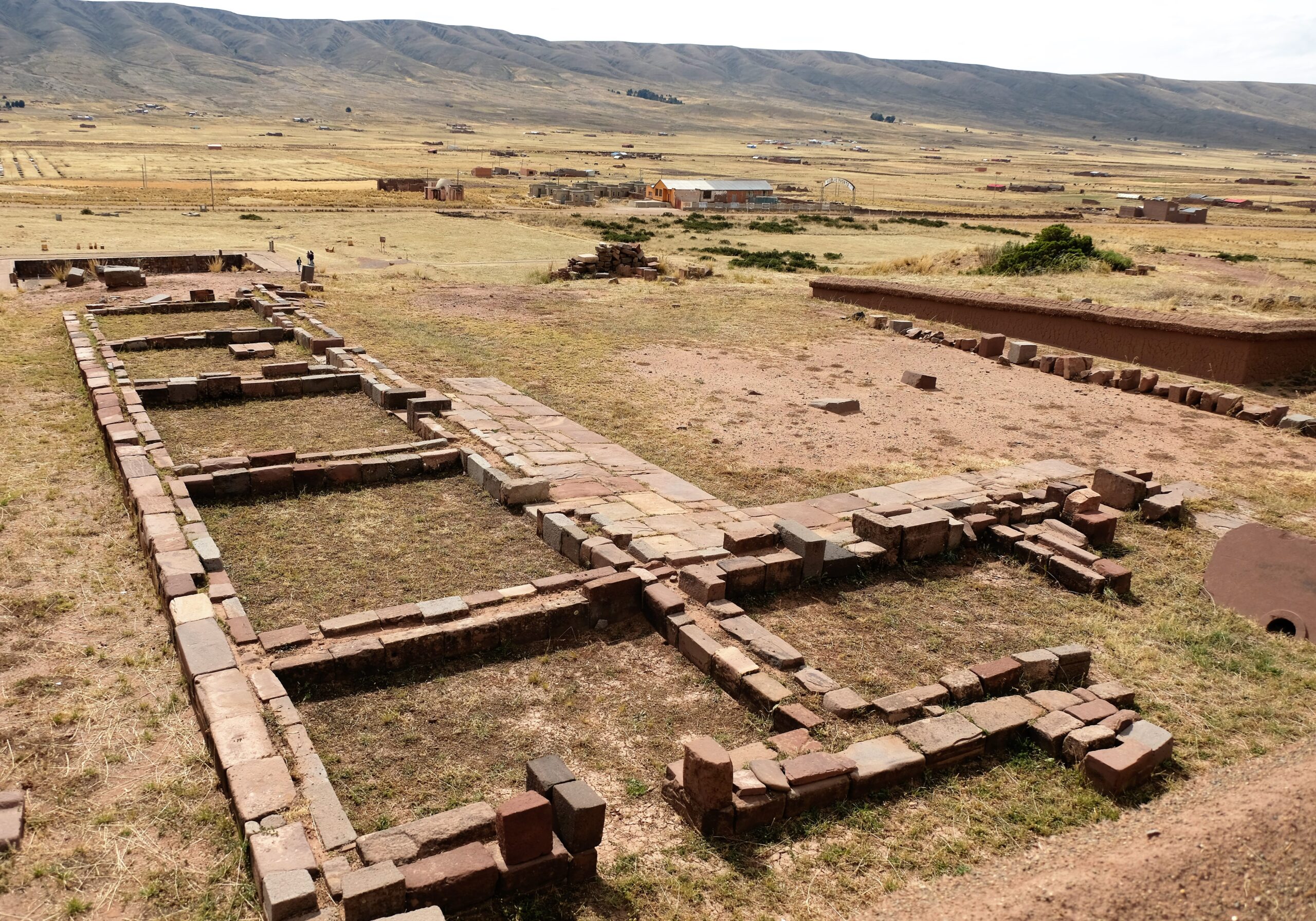
Pumapunku
The Pumapunka or Puma Punka is another manmade platform pyramidal shape but smaller than Akapana. Located away from the main Tiwanaku archaeological site, it seems almost forgotten. Don’t miss it! Pumapunku has some of the best carved stones and there are loads of them. Pumapunka also have many colossal monoliths, the largest throughout Tiwanaku! The largest of these weighs up to 135 tons! Not as big as Akapana, still an impressive 167m wide (North-South axis), 116m broad and 5m high, with 27m projections North and South (Northeast and Southeast corners). Within very close proximity to the main Pumapunku pyramidal mound are walled and unwalled courts (some sunken) which by their location are associated/linked to the purpose of Pumapunku.
Without doubt the most impressive structures (carved stone) in Tiwanaku are located around Pumapunku. Of the most impressise is a terrace cut out of rock, like a large flat patio measuring 6.75m by 38.72m! It looks like a enormous paving stone with lines, grooves and shapes cut into part of it and lies at the front (East-side) of Pumapunku. This platform is called “Plataforma Litica”, it is an immensely impressive work of engineering and stonemasonry weighing in at around 131 tons! Plataforma Litica is not a one trick pony at Pumapunku, the next biggest stone is 85 tons, hardly small! Pumapunku looks very much like it’s in the infancy of restoration. Even so the stones scattered about are amazing in size and carved stone. There are dozens of examples of perfectly cut circular holes into the stone, others with geometric shapes with perfect square corners. The stonework here could match any of ancient sites.
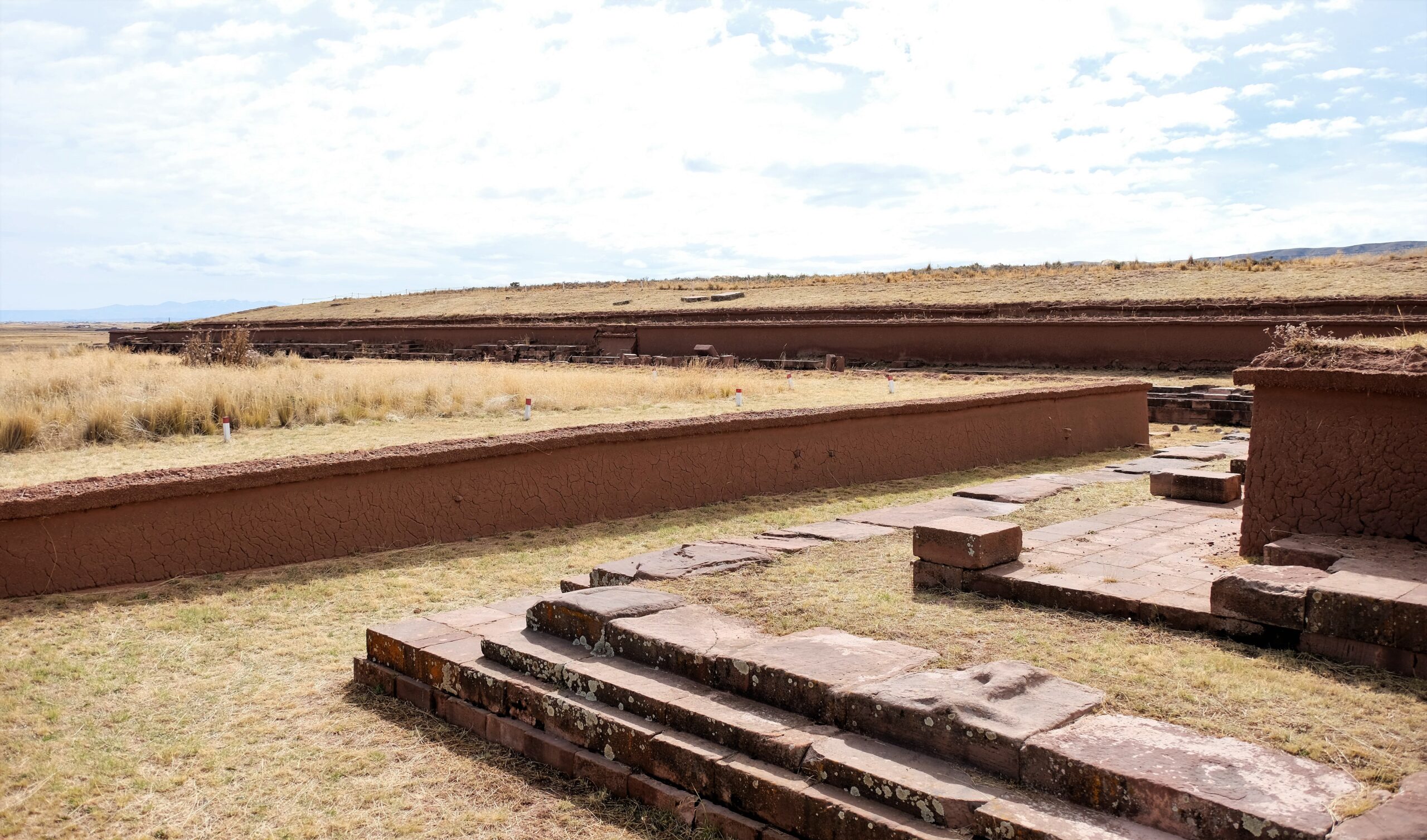
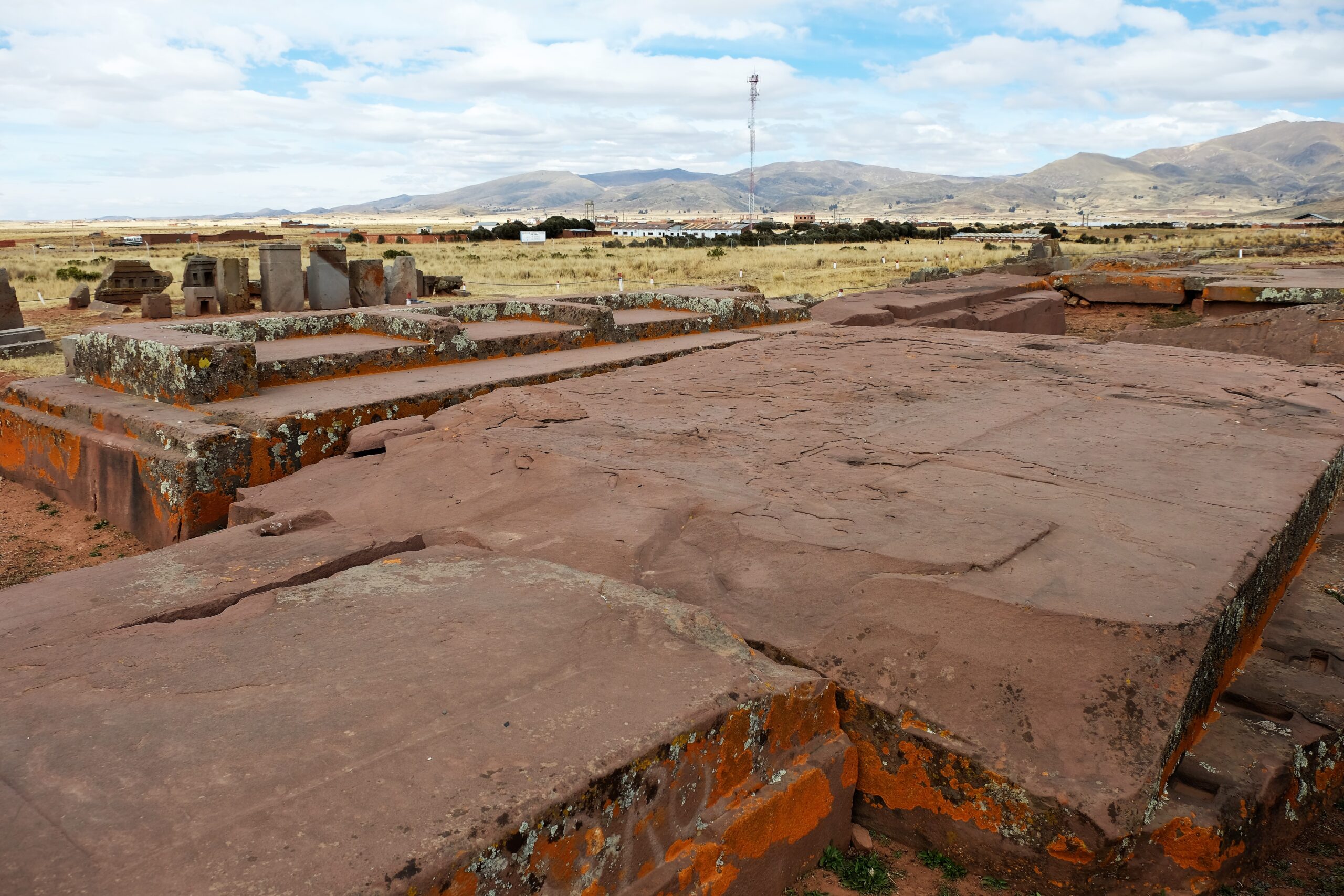

Kalasasaya
The Kalasasaya covers a large part of Tiwanaku; a huge walled courtyard measuring 120m by 130m. Explorers found The Gateway to the Sun inside the courtyard of Kalasasaya, though this is likely not its original location. Its current walls may not be an accurate representation of what it looked like in antiquity. Kalasasaya is built on a large mount, there was probably a sunken courtyard at its centre…sadly nothing much is left of this. Sure the size and walls are impressive, but it’s the staircase on the East-side that’s most impressive. Using massive stones for the stairs you entre through a stone gave made of huge stone slabs! Inside Kalasasaya’s courtyard isn’t much, but with such a grand gated entrance this must have been a significant place. There are a few monolith statues of what is thought to be deieties but these are unlikely to be in their original locations – that’s not to say there weren’t any of these statues inside Kalasasaya. Of these monolith statues the most famous is the Ponce Monolith, named after the Bolivian archeaeologist Carlos Ponce Sanginés. Some people think these monoliths are reincarnations or different versions of the Staff God. Others think it represents other deieties or high priests/shaman. Whatever they are or whoever they represent it surely was a venerated being/deiety. The Ponce Monolith is exquisty carved and takes pride of place (as do the other statue monoliths) inside Kalasasaya.


Semi-Subterranean Temple
Next to the Kalasasaya is the only good example of a restored sunken courtyard, the Semi-Subterranean Temple. This is a peculiar thing for me, I’ve not seen an ancient site with something important sunken into the ground. The semi-subterranean temple isn’t just a hole dug into the ground. This is a beautifully walled temple, with perfectly square corners using expertly cut stone…and lots of it too! Here is also the best example of walls with tenon heads. These just add to the temple’s intrigue. Some of the heads have seen better days, some may have been puma heads, but they are indistinguishable in their present state. Their styles also vary quite a lot; it could be because the site was used over a prolonged period of time – maybe even for different uses. Built similar to the Kalasasaya using evenly spaced monoliths filled between with smaller cut sandstone. Even here some of the monoliths weigh up to 26 tons!
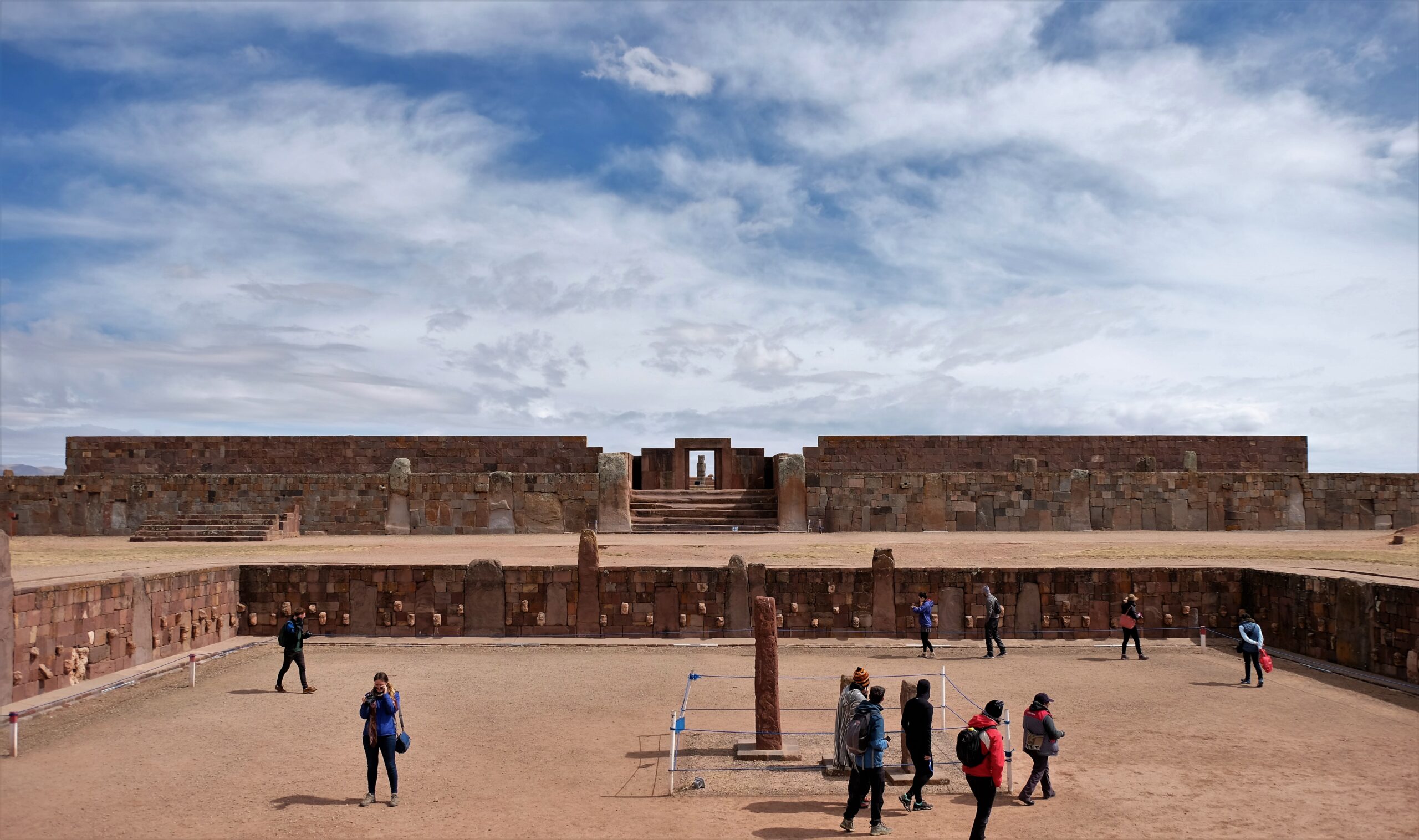
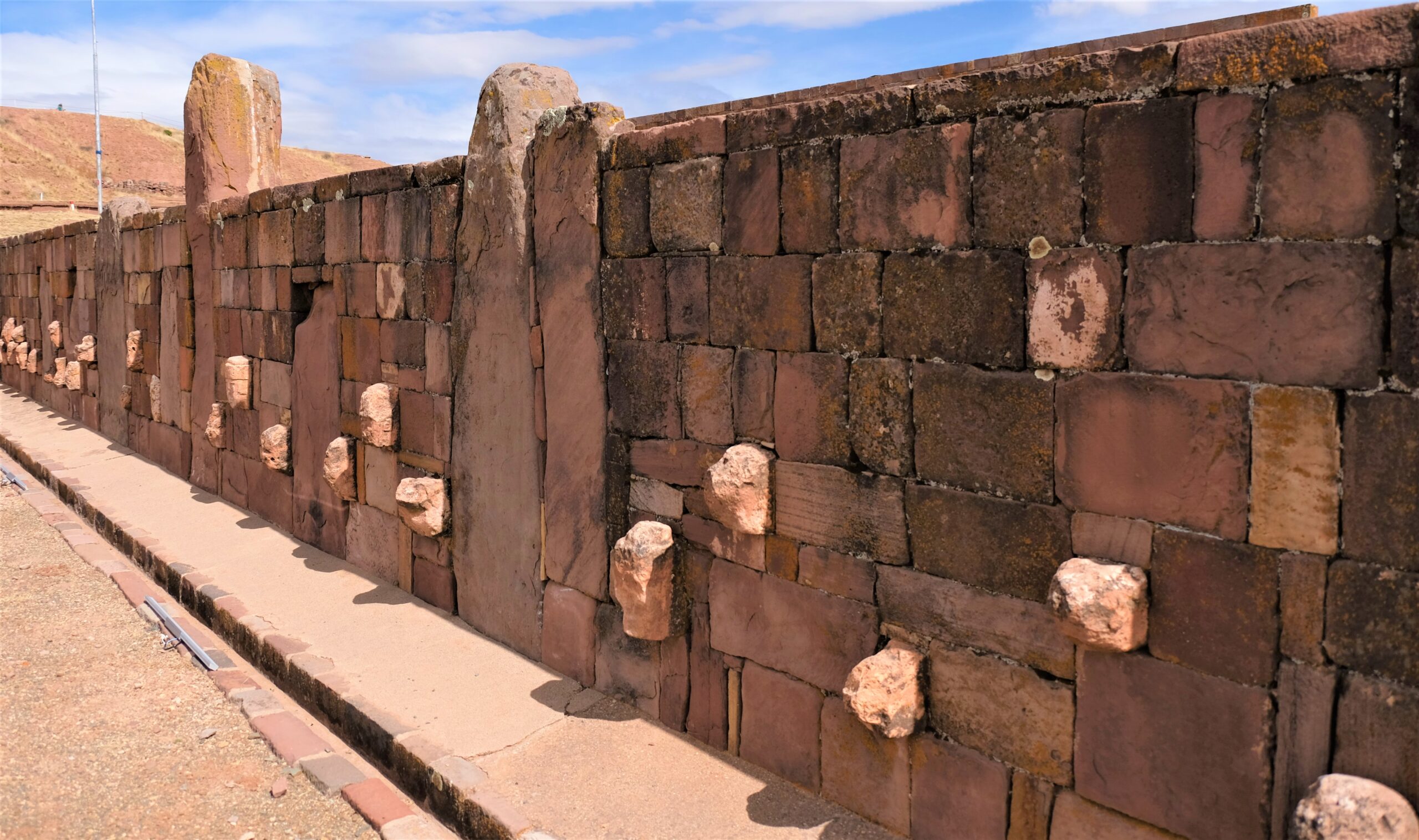

Gateway of the Sun
Probably one of the if not the most famous artifact of Tiwanaku is the Gateway of the Sun. There isn’t just the one, there are a few of these, most can be found at Pumapuku. Those at Pumapuku are sadly not in the best of shapes many missing the top horizontal park. It wouldn’t surprise me is looters took these as this is the most decorative part. Peculiar notches are cut into the back of the Gateway of the Sun. Not just holes, well cut rectangular recesses mirror on the aposing side. Maybe the Tiwanaku invented art deco ?. These are said to be sockets for clamps or later additions. This doesn’t sound right to me, the niches are cut exceptional well, mirroring each side. Obviously I’m no expert, but I can’t see them cutting these for a “future” purpose. With skills like the Tiwanaku the current explanation seems lazy.
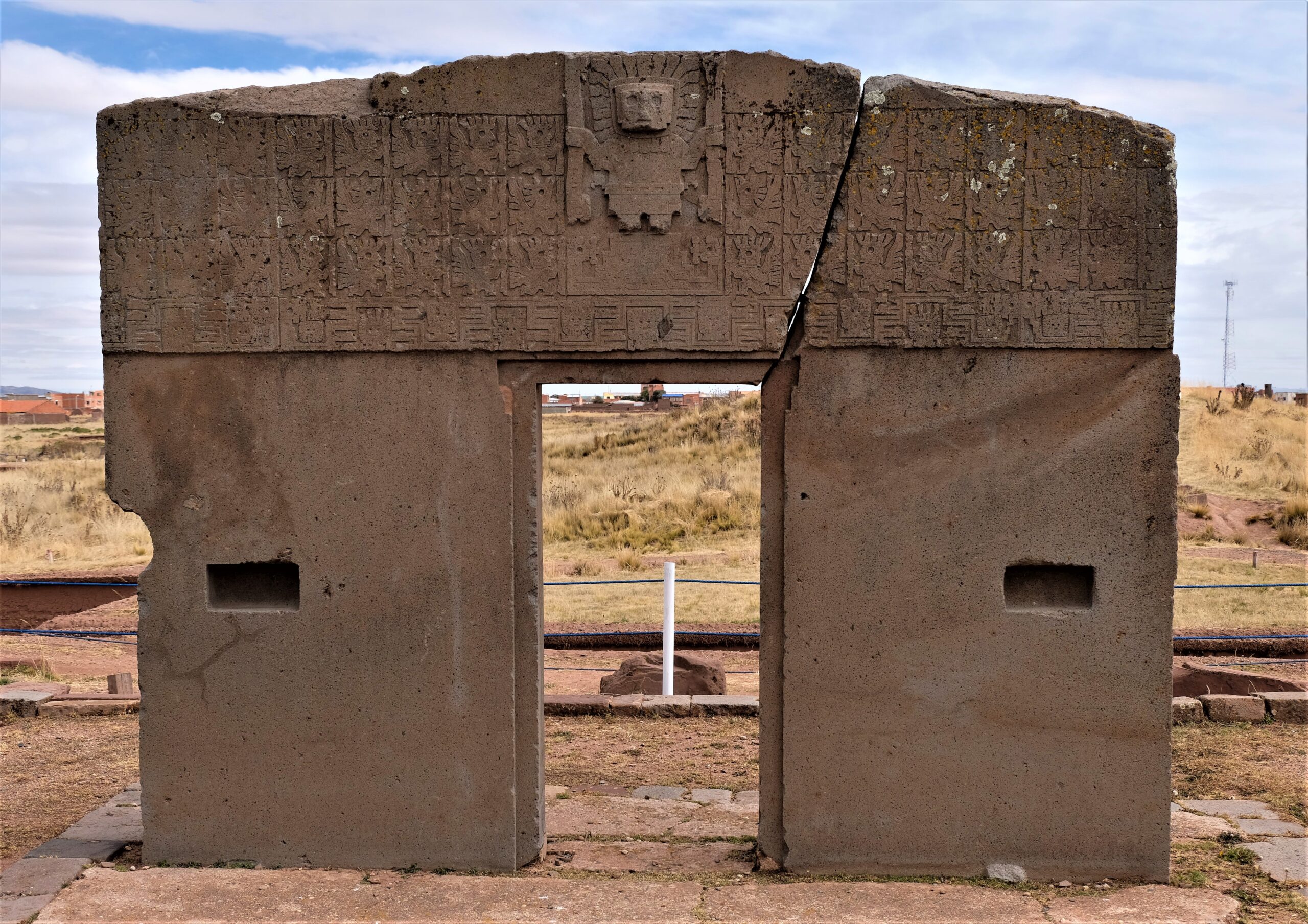
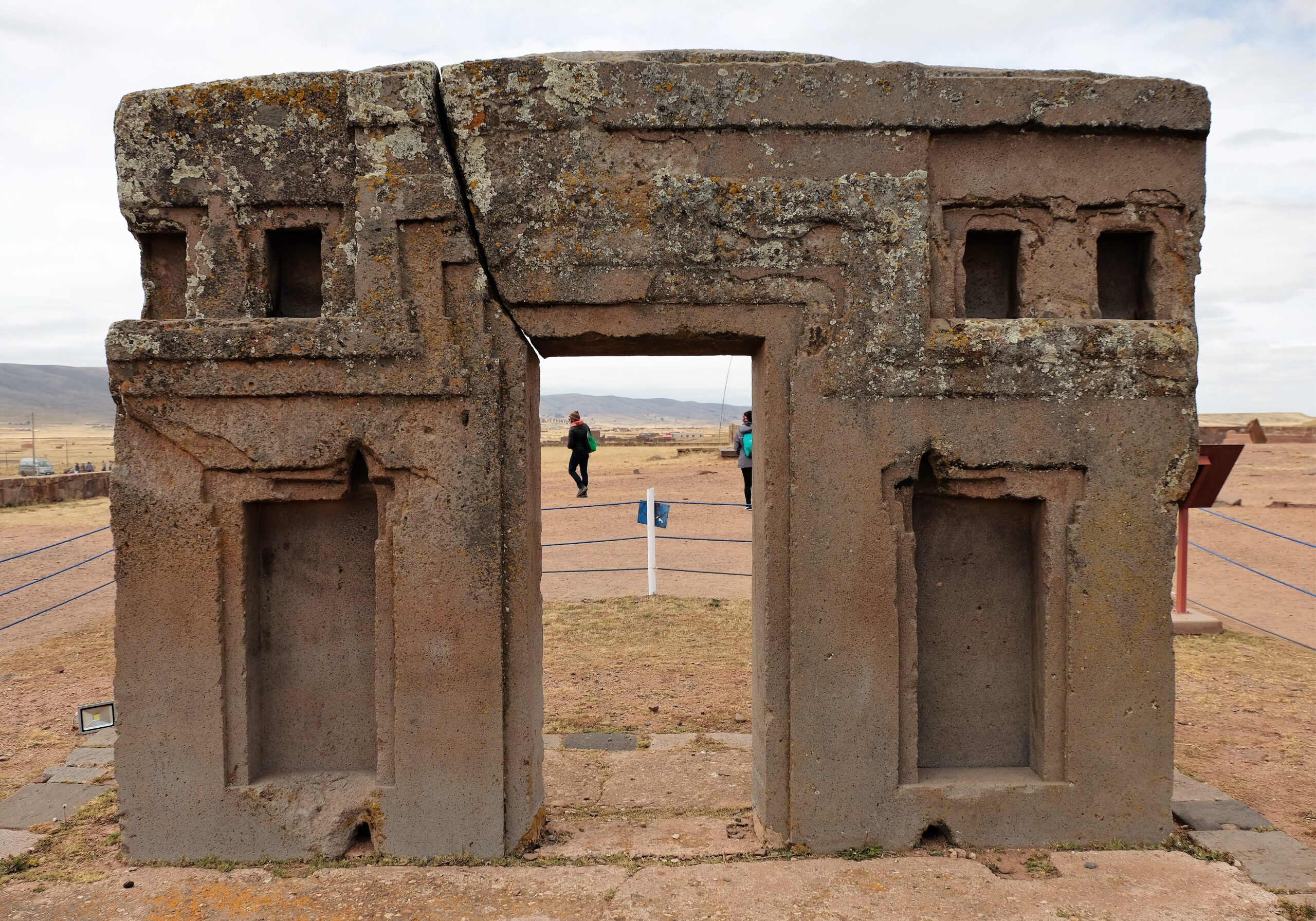
Some anecdotes on Tiwanaku
Throughout Tiwanaku entrances to structures called gateways are impressive, as if they went out of their way to make a statement. These entrances are grand; no matter if it’s for a sunken courtyard or raise walled off courtyard, the entrances are dominated by huge stones like doorframes (not all have the horizontal pieve). These must have served some purpose other than an entry in my opinion. What the purpose was or what statement they made is yet to be understood. Of all the structures the gateways are by far the most elaborately decorated with iconography of the Staff God, in Inca religion he is called Viracocha. Of the most impressive iconography is on the horizontal piece of the Gateway of the Sun. For the Tiwanaku skill in symetrical stone carving and moving mammoth stones then Pumapunku takes the cake!
Something else I thought was very interesting was how they joined stone blocks. Stones had an “T” shape cut into them, the opposing block an inverted “T”. When the two blocks are brought together they form a capital “I”. Molten metal was poured into these niches in situ creating a bolt that holds the two pieces together. This reminded me of the wooden wedge I saw at Kom Ombo in Egypt used for the exact same purpose.
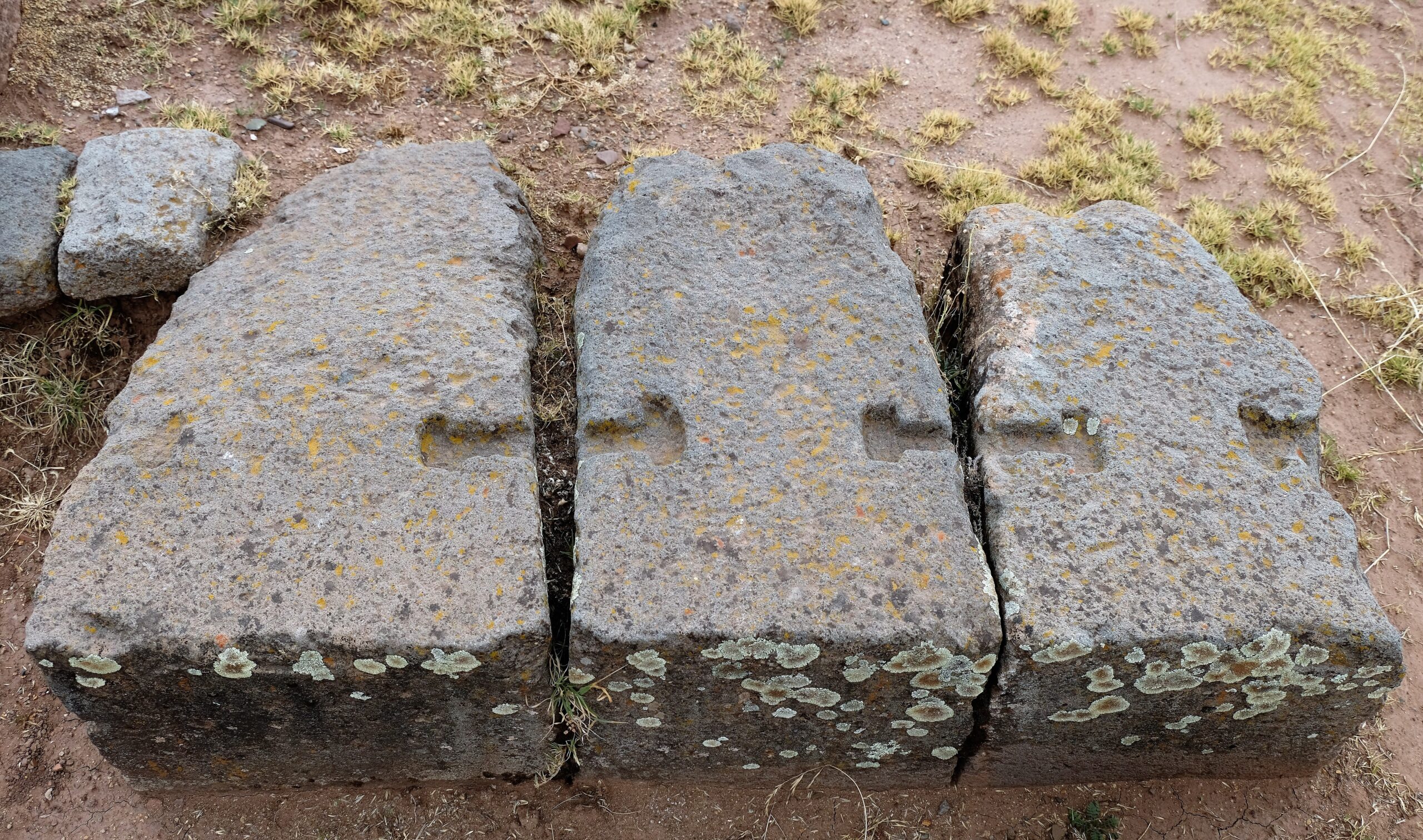
During Tiwanaku’s occupation the landscape was very different to what it is today. Back then Lake Titicaca extended right up to the Northern boarder of the city. Now the lakes closest shoreline is about 16km away. There are a few streams around Tiwanaku but back then their water supply would have been plenty, now it looks barren and dusty dry. This receding water line lends credence to Tiwanaku being abandoned due to a drought.
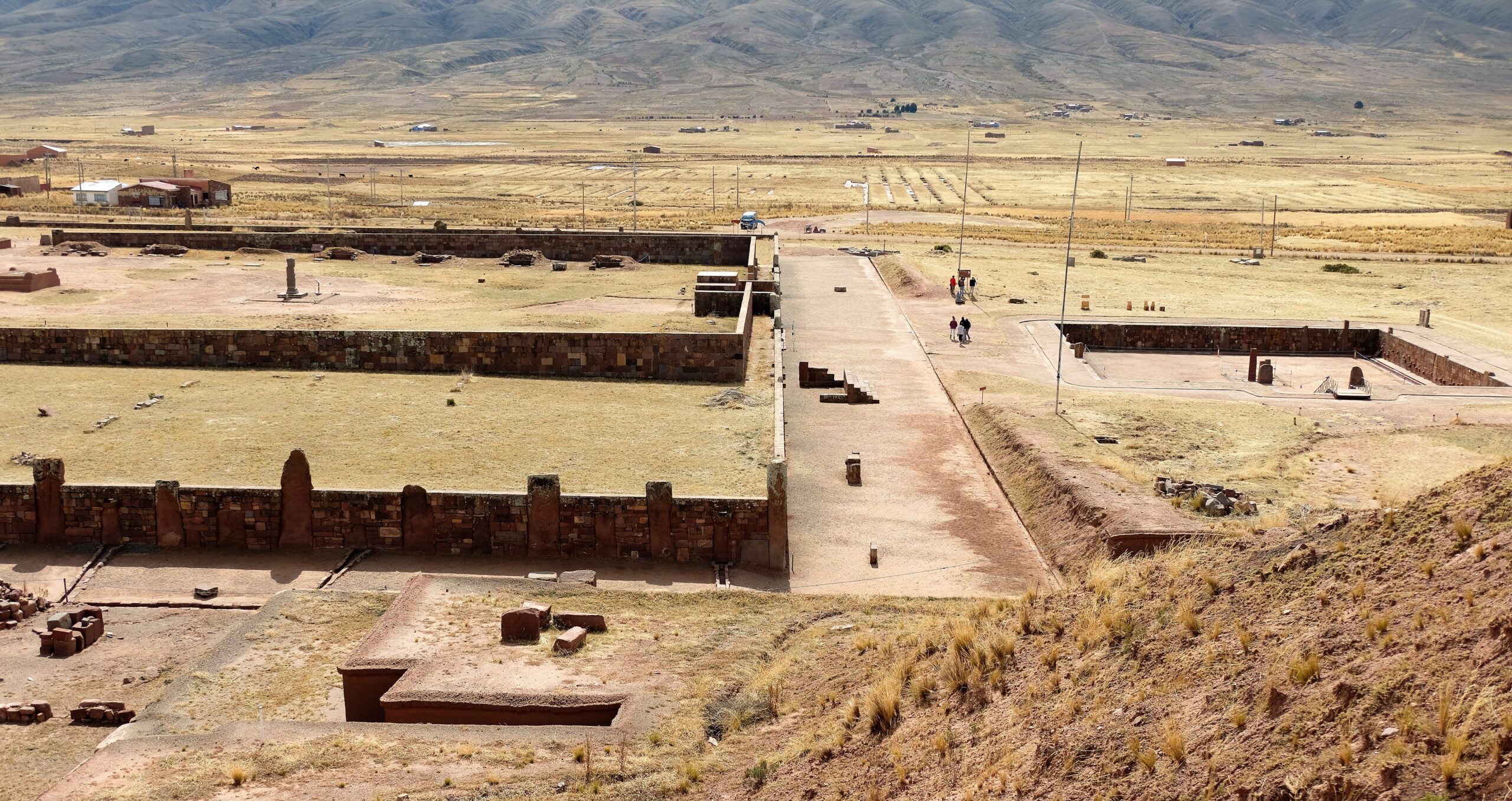
My thoughts on the day
I enjoyed the visit and I’m glad I went. I wasn’t in the best frame of mind not feeling well. Our guide like I said was a nice guy but spoke very softly, mixing Spanish and English throughout. This made it difficult to understand. I though it was just me but on our way back to the minibus I spoke to a few people and they too couldn’t understand him; some could speak Spanish and they couldn’t understand. He knew his stuff so it’s a pity. I’m being generous if I say I heard 30% of what he said. Tiwanaku is intriguing, especially if you consider its location and when it was occupied. Include the regional Empires that followed, then is stands to reason Tiwanaku would undoubtedly have influence the Empires that ascended afterwards. Still, those that followed bare little resembles to this once prosperous and skilled culture.
After the visit we had lunch at a little local restaurant. I felt exhausted, tired, and unwell. Trying my best to have conversations I think some people may have thought I was a little rude or maybe off’ish. I just didn’t feel like speaking to anyone, I didn’t even eat. All I wanted to do is get back to my accommodation and sleep…except I couldn’t because of the insistent cough! GRRRRR!!! Anyway, I prefer to finish on a positive note. This was my last day in La Paz, later that evening I would be heading to Sucre on my next Bolivian chapter!
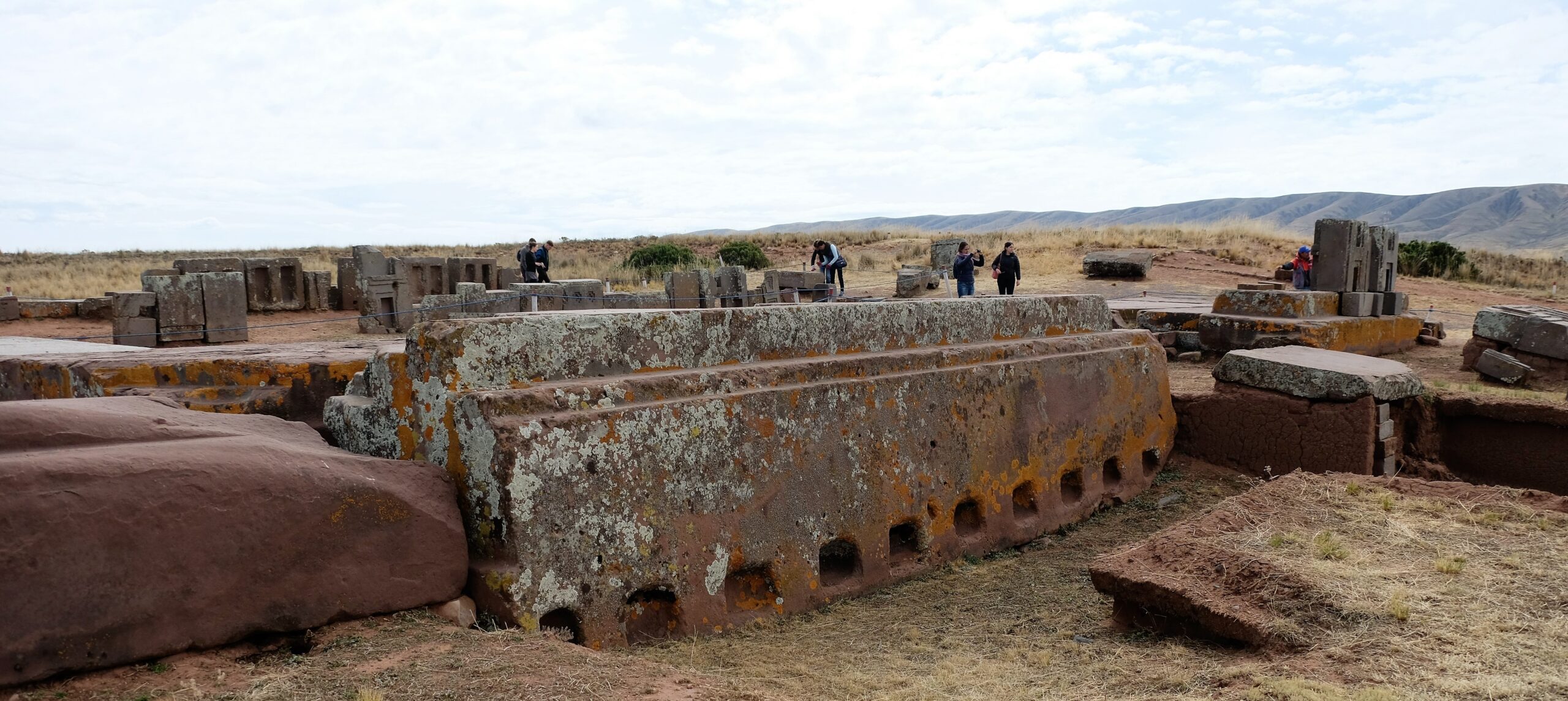
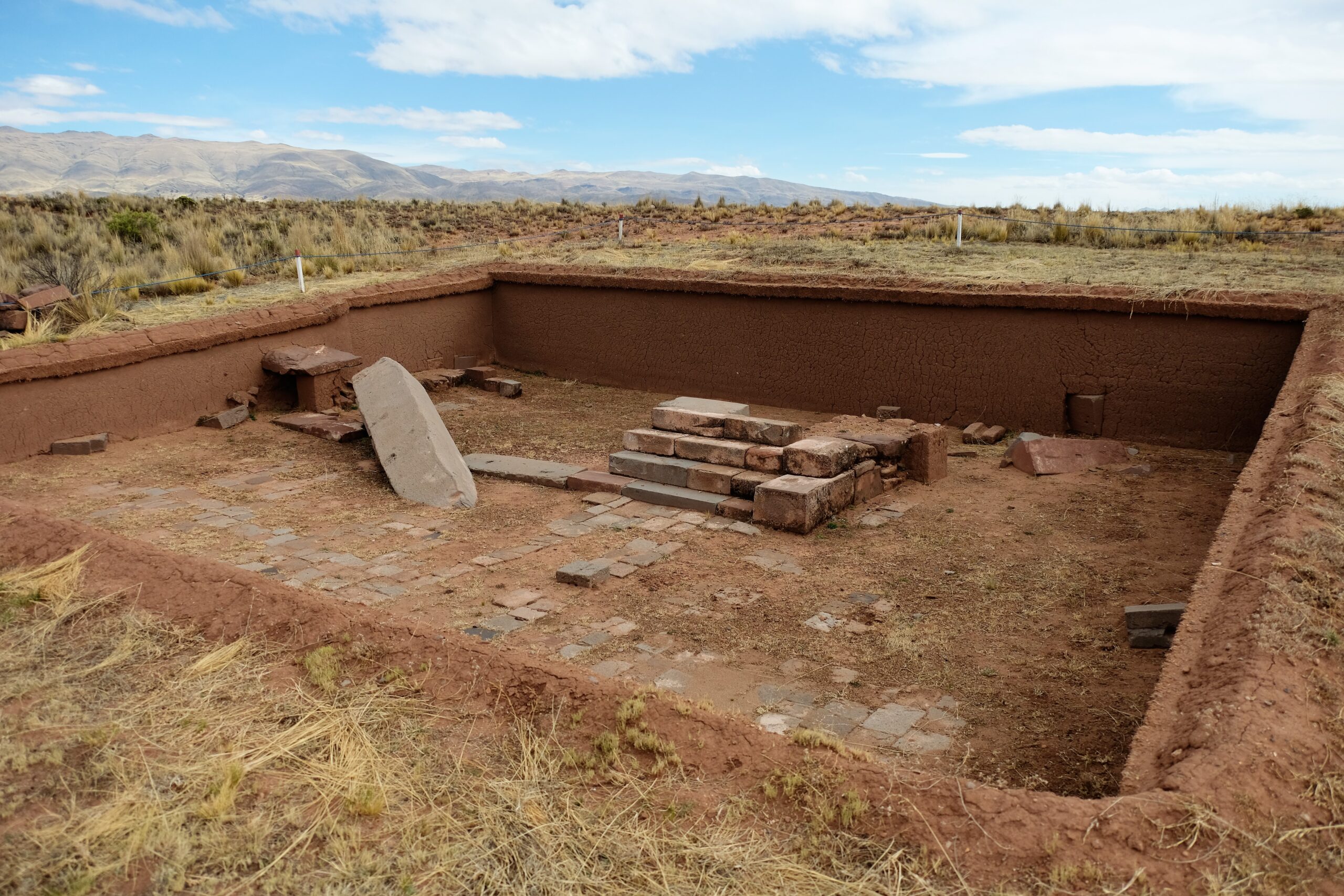


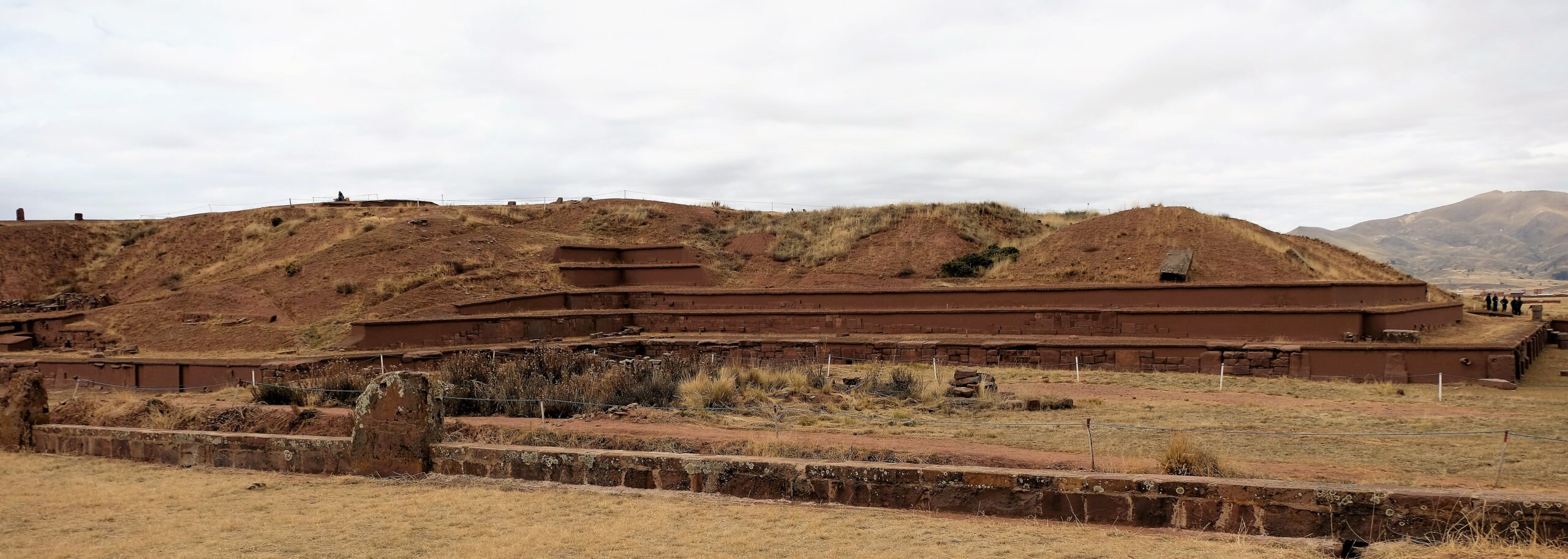
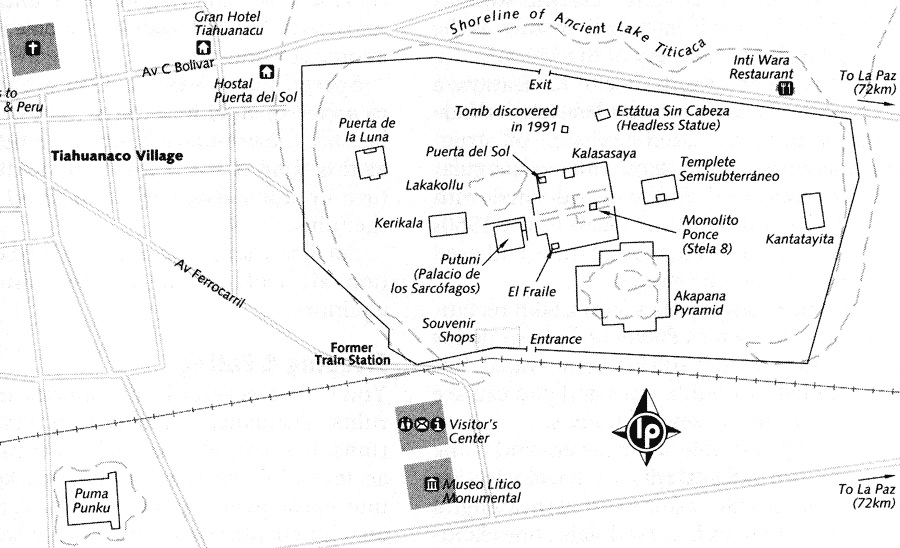
Heading back into La Paz from Tiwanaku; gives you an idea of La Paz outside of the CBD – Bolivia
